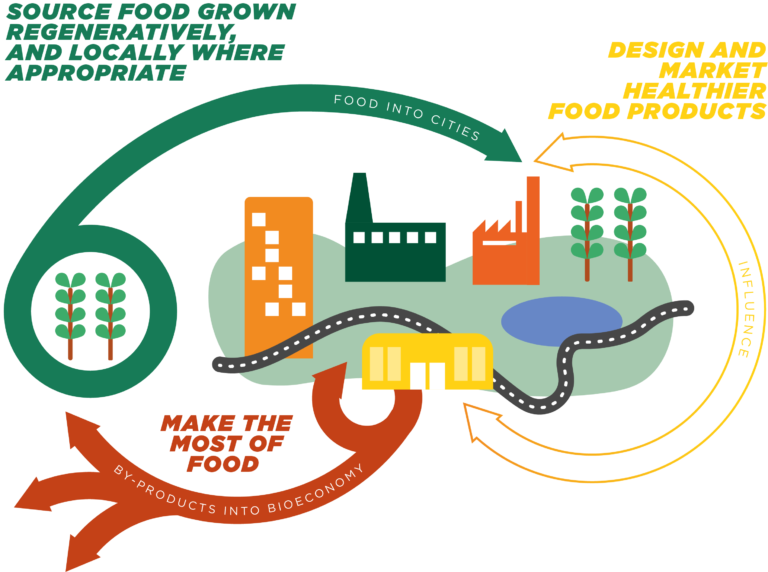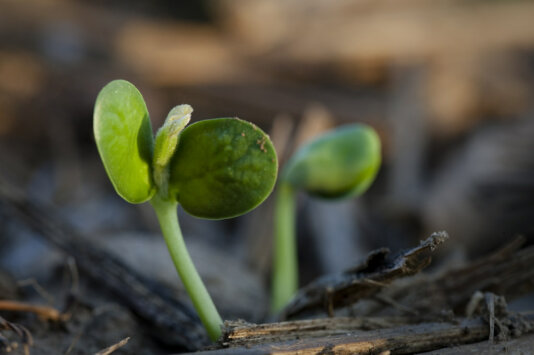- About
- Topics
- Story
- In-Depth
- Picks
- Opinion
- News
- Donate
- Signup for our newsletterOur Editors' Best Picks.Send
Read, Debate: Engage.
“An apple a day keeps the doctor away,” “Don’t put all your eggs in the same basket,” “Too many cooks spoil the broth.” Food permeates our lives, our cultures and our collective imagination. It underpins our health (or lack thereof), nourishes us, serves as a reason for family gatherings or for dates with romantic partners and is the centrepiece of a growing number of magazines, recipe books, cooking shows, movies and advertisements.
Food makes life possible. In recent decades, we’ve gotten very good at making food accessible and convenient for those who can afford it. We’ve also made strides in tackling hunger - though more than 10 percent of the world’s population remains food insecure.
But there are downsides to how we grow and consume food. By clearing land for food crops and pastures, we’ve driven biodiversity loss and climate change. Together with forestry and other land use, agriculture accounts for more than 24 percent of global greenhouse gas emissions.
More than a third of the world’s land surface and nearly 75 percent of freshwater resources are devoted to crop or livestock production. By using chemicals to protect our monocultures from pests and to increase yields, we’ve polluted our air and water and contaminated our soils. And, by limiting the vast majority of what we eat to 12 plant species and 5 animal species, we’re putting our health on the line and pressure natural resources.
It doesn’t have to be this way. We don’t have to choose between feeding ourselves and preserving the environment. The circular economy offers a framework to reimagine today’s damaging and unhealthy food system, transforming it to be regenerative, distributed and equitable, all by design.
In the Ellen MacArthur Foundation’s vision of a circular economy for food, we make the most of food, so it never becomes waste and the very act of growing food regenerates nature.
The equivalent of six garbage trucks of edible food goes to waste every second. The causes of food waste and loss vary from region to region. In developed countries, the leading source of waste are consumers themselves, who discard significant amounts of the food they purchase. In developing countries, insufficient cold storage and transportation infrastructure result in significant amounts of food being lost before it even reaches consumers.
Valuing food means ensuring that no edible food ever goes to waste. In a circular economy for food, all edible food is enjoyed at its highest value - that is, by humans - and any edible food that would otherwise be wasted is redistributed.
The infrastructure necessary to make the most of food needs to be put in place to achieve this, driving investment, job creation and economic opportunities in food producing regions. ‘Ugly’ fruit and vegetables that are often thrown away are increasingly being turned into pastes, compots, juices and other products. Sometimes, such produce is sold as such. In the UK, retailer Sainsbury’s sells ‘ugly’ products at a discounted rate, making it economical and convenient to avoid food waste.
If we can prevent all edible food from going to waste, we could feed up to 1 billion extra people by 2050. That is more than the number of people who are food insecure at the moment, which stood at 821 million in 2017.
But there is more to food waste than edible food being discarded. Banana peels, potato skins, apple cores - we often throw them away, but doing so is a wasted opportunity. These nutrient-dense by-products often end up in landfills, where their decomposition generates the potent greenhouse gas methane.
And then there’s the human waste resulting from our consumption of food - yes, the stuff you flush down the toilet. We produce a lot of it: by some estimates, almost 300 million tonnes per year.
These sources of unavoidable waste can be put to good use. How? By turning them into compost and other soil enhancers that can then help make more food. After all, that’s how organic materials are circulated in nature: waste from one thing becomes food for another.
We humans have departed from the natural biocycle. Returning to it will not only be better for the environment and the climate, but, according to our analysis summarised in the Cities and Circular Economy for Food report, it would also help us reap benefits to the tune of $700 billion per year by 2050 in cities alone.
So, what do we need in order to get there? Investments in infrastructure to capture the valuable nutrients in by-products so that they can help grow more food. That means developing systems to collect unavoidable bio- and food waste separately from households and businesses; to treat these materials in composting facilities or anaerobic digesters; and to then distribute the compost or soil enhancers to farms.
Since this type of infrastructure is often managed by public authorities at the local level, cities play a vital role in ensuring that our food never goes to waste.
At the moment, every $1 spent on food comes with an additional $2 in negative economic, environmental and health costs. These costs include, among others, biodiversity loss, climate change, air and water pollution, soil contamination and the costs of treating lifestyle-related diseases like obesity.
The problem with our existing economy is that we’re not paying for the $2 directly; the market is not capturing the full costs of the impacts from food production.
If we want food to remain affordable, we simply can’t keep ignoring the $2 any longer; we need to start addressing these costs. One of the key ways to do so is to change how we produce our food by shifting towards regenerative food production.
Solely by producing food regeneratively, we could reduce food system greenhouse gas emissions by more than a third by 2050. Regenerative farming encompasses a broad array of practices, such as no-till farming, agroforestry, crop and animal diversity, cover crops, managed grazing for livestock and swapping synthetic inputs for organic ones.

These practices would not just cut emissions of food production significantly but also regenerate our soils, thus enabling them to capture and store carbon from the atmosphere and improve their water retention and storage capacity together with their overall fertility.
Some, like Brazilian chef Alex Atala, argue that regenerative production also improves the taste of food. Atala told the audience gathered virtually to watch the Ellen MacArthur Foundation’s Big Food Workshop in June 2020: “The concept of biodiversity may be abstract to some people. That’s why it’s important to show people how good biodiversity can taste.”
At the same event, US-based chef Dan Barber echoed these thoughts by sharing an anecdote about his visit to a farmer that supplied his restaurant with wheat, during which he realised how important crop diversity was to the production of the rich, nutritious wheat that he was purchasing.
“I was standing in the middle of the field and I was looking around and I saw almost no wheat. I saw rye and barley. I saw cover crops, I saw leguminous crops, but very little wheat,” he said. Yet, the only product that he was purchasing from the farmer was the wheat. The visit was an epiphany for Dan, completing changing his relationship with farmers from then on. “I started to support the whole of his farm,” he added.
Dan and Alex’s examples go to show that each actor in the food sector plays a vital role in changing how we grow our food. Farmers and growers are evidently important to the transition to regenerative food production, but the onus to change shouldn’t fall solely on them. Food buyers - manufacturers, retailers, restaurants, catering companies, procurement professionals - and policymakers all play important roles in setting the conditions that will enable farmers to shift to regenerative practices at scale.
By putting in place the enabling conditions, like subsidies for regenerative farming, sourcing policies and support for suppliers, all these actors can contribute to the transition to better farming practices that will help mitigate climate change.
Emma Chow serves as the project Lead on the Food initiative. Chow and her team bring together major industry players from across the food value chain, along with city municipalities, to take a systemic approach to unlocking the powerful positive potential of the food system.
Graph: Ellen McArthur Foundation.
Image: USBThinkingAhead.
This article has been published as part of a content partnership with The Beam.
